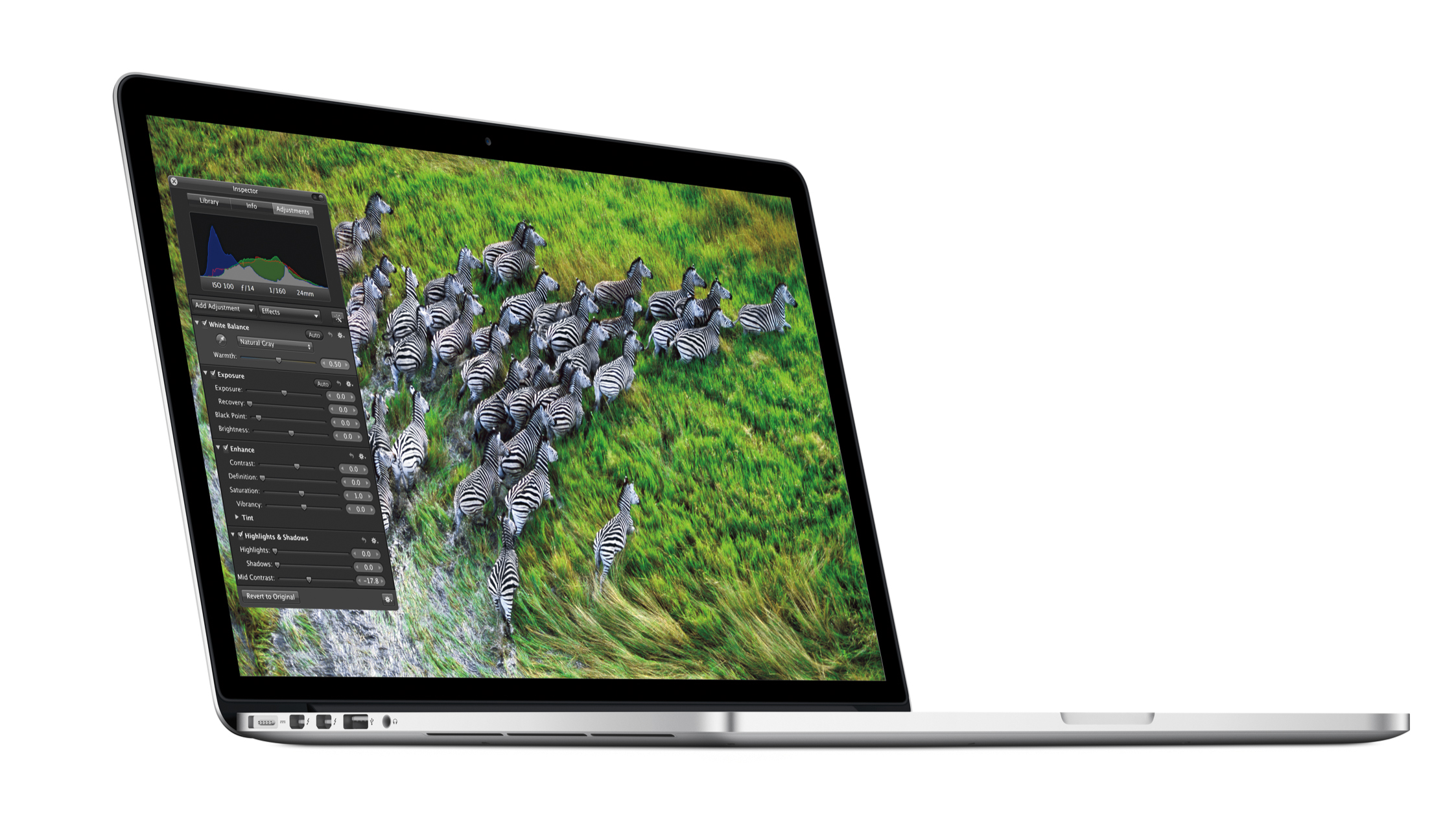Why Apple's MacBook Pro retina display is great news for the PC
Apple's high-resolution display: coming to a PC near you?

Much of the flurry of announcements from Apple's WWDC 2012 is intriguing but essentially tangential for PC users. With one possible exception.
Will the refreshed MacBook Pro 2012's Retina Display kick off a trend for ultra high resolution PC displays?
For those of you trapped in boxes during the Apple announcement, the new 15-inch MacBook Pro portables have been given screens with massive 2,880 x 1,800 pixel grids.
That's way beyond any previous laptop system and even outstrips the best desktop PC screens, which currently top out at 2,560 x 1,600 (excluding exotic high-res displays used for medical imaging and similar essentially industrial applications).
As it happens, I argued earlier this year that it was Apple's use of high quality IPS displays in its iPhone and iPad gadgets that had sparked a trend towards better LCD panels PC monitors and laptop systems. So, you might assume a similar process could see a resolution war among laptop and PC screen makers.
More than just the money
Sadly, I think not. When it comes to IPS versus cheapo TN panels, the only issue was cost. If you're willing to pay a little extra, there are no usability or compatibility issues. On the contrary, the improved viewing angles makes IPS panels easier to use.
Not so for ultra high resolution screens. For starters, you need software support for ergonomic use. As it stands, Windows operating systems have not been truly scalable in terms of resolutions and DPI settings. Yes, it is possible to change the DPI setting in Windows to adjust things like fonts and icons to suit variable resolutions. But it only works up to a point.
Sign up for breaking news, reviews, opinion, top tech deals, and more.
The problem is that Windows has historically been a bitmapped operating system. In other words, the graphical elements are drawn using fixed or bitmapped image files. Microsoft provides a few different versions of most of the important stuff. But even then, changing the DPI can make things look ugly and imbalanced.
Worse, it can break functionality as buttons and controls become partially or completely obscured. What's more, with only a few different bit maps for each icon or screen element, there's a limit to the resolutions Windows can support, even in this broken fashion.
The alternative, of course, is just to leave well alone and allow fonts and graphics to become smaller as the resolution scales up and the pixel densities increase. Again, that's fine but only up to a point. The MacBook Pro's screen is a 15 incher and running that resolution without scaling fonts and icons and the rest would make everything preposterously tiny and illegible.
Vectorise that GUI
What Microsoft really needs to do – and what I think it originally promised to do way back when it was developing Windows Vista – is to vectorise the Windows GUI. This would allow fluid support of pretty much any resolution.
Now, it's true that Apple's OSX isn't fully vectorised, either. I haven't seen the new MacBook Pro, so I'm not clear on exactly what Apple has done with OSX to accommodate the new Retina Display. But OSX was already partially vectorised. And anyway, Apple has much fully control over the combined hardware and software package, so it has a much freer hand in updating any bitmapped elements to suit.
Part of the problem for Windows is that proper multi-DPI support would require all application makers to vectorise their graphical elements and icons, too. For new apps, not a problem. For the massive eco system of existing apps? Tricky.
Metro to the rescue
The good news is that the new Metro touch-optimised interface in Windows 8 is vectorised and Microsoft has also provided frameworks that take the strain of developing DPI-aware applications away from developers.
Indeed, tablets with 10-inch 2,560 x 1,440 screens are expected to be available soon after Windows 8 launches. But what about ye olde desktop mode, which, let's be honest, is probably what most of us will be using most of the time, at least initially?
Microsoft is holding back the final version of the traditional desktop GUI for Windows 8 until the actual launch, but my guess is that it will stick with bitmaps.
In many ways, that makes sense. Handily, all Metro apps are by definition new so that sidesteps the backwards compatibility problem. But it does mean that compromises will have to be made with a device along the lines of an ultra high-res tablet-convertible-laptop thingy.
Switching from Metro to desktop mode will probably mean either ugliness courtesy of wonky bitmaps, or just scaling everything with an interpolated resolution.
It won't be ideal either way, and that probably means Apple will have the edge for the foreseeable future when it comes to ultra high-res portables.
Oh, and on a final note, it's also worth remembering that many video interfaces only support up to 1,920 x 1,200 pixels. Dual-link DVI and HDMI 1.3 will do 2,560 x 1,600. But I'm not clear if they would actually support the 2,880 x 1,800 resolution of the Retina Display, for instance. It's always a bit more complicated with PCs.
Technology and cars. Increasingly the twain shall meet. Which is handy, because Jeremy (Twitter) is addicted to both. Long-time tech journalist, former editor of iCar magazine and incumbent car guru for T3 magazine, Jeremy reckons in-car technology is about to go thermonuclear. No, not exploding cars. That would be silly. And dangerous. But rather an explosive period of unprecedented innovation. Enjoy the ride.